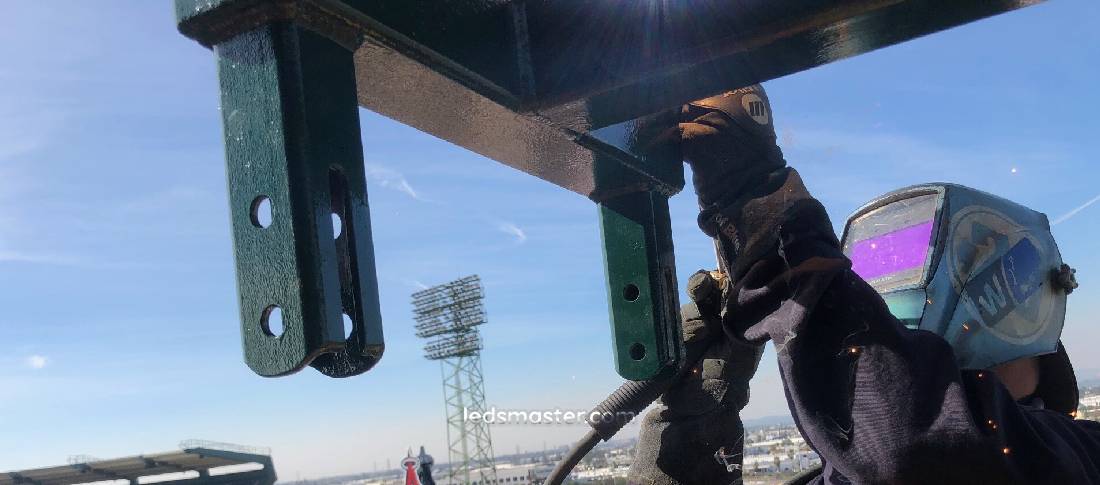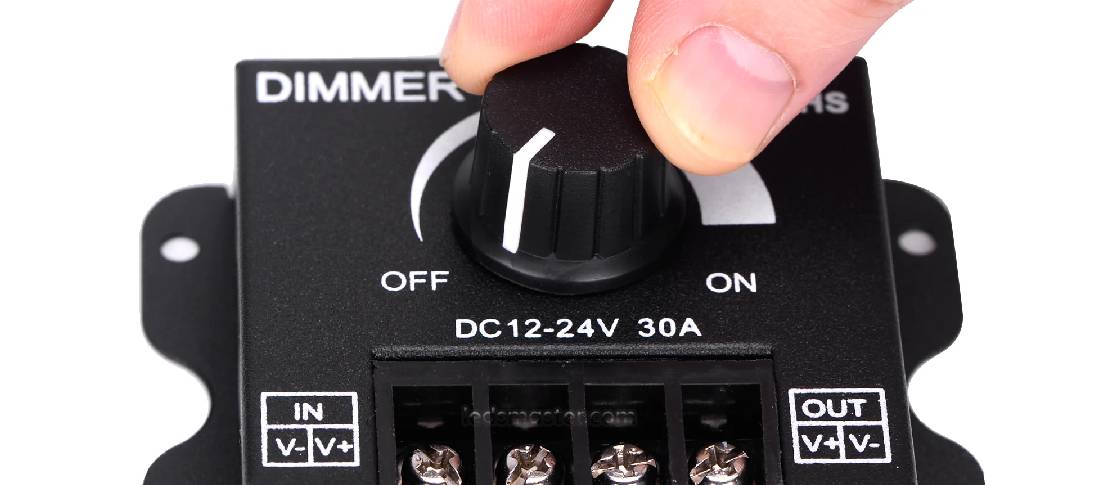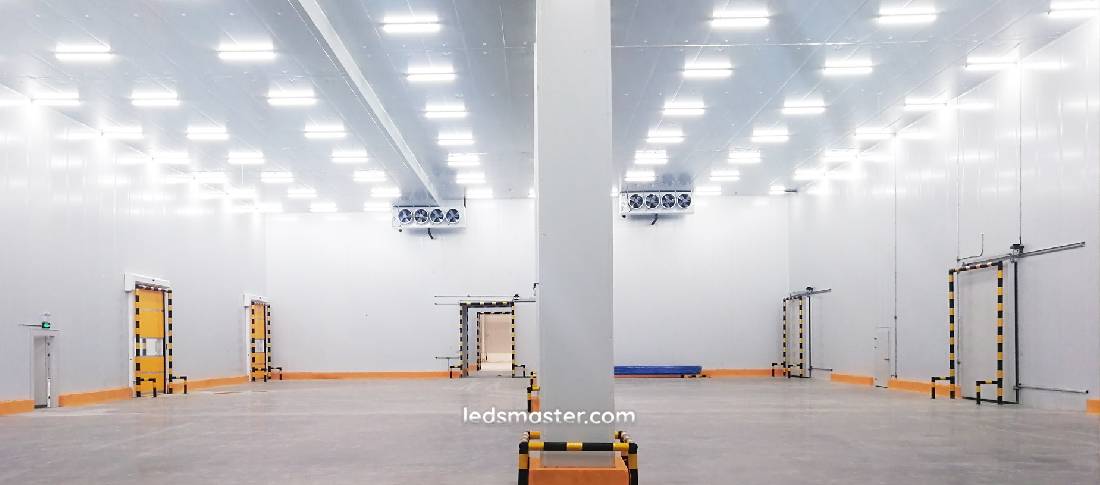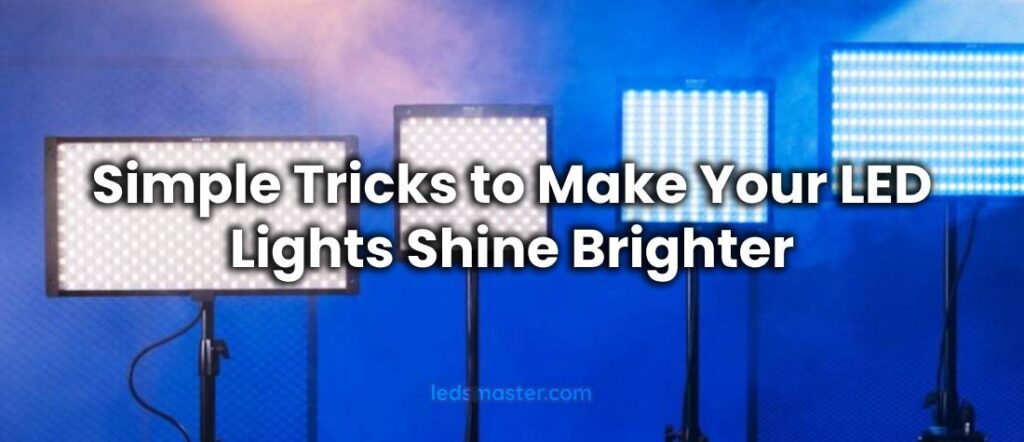Table of Contents
ToggleMaintenance and Cleanliness
Maintain Clean Fixtures
Maintaining clean fixtures is crucial for ensuring that your lighting system performs at its best. Over time, dust, dirt, and grime can accumulate on light fixtures and lenses, leading to a noticeable decrease in light output. This buildup can obstruct the light and cause it to scatter or dim, reducing the overall brightness and effectiveness of your lighting.
To keep your fixtures in top condition, regular cleaning is essential. Use a soft, dry cloth or a mild cleaning solution to gently wipe down the surfaces. It’s important to avoid abrasive materials or harsh chemicals, as these can scratch or damage the fixtures. A gentle approach helps to preserve the integrity of the fixtures while keeping them clear and bright.
Regular cleaning not only helps to maintain optimal brightness but also extends the lifespan of your fixtures. Dirt and grime buildup can affect the performance of your lighting system by blocking light output or causing overheating. By keeping your fixtures clean, you prevent these issues and ensure that your lighting system operates efficiently and effectively.

Regular Inspections
Regular inspections of your LED lighting system are vital for identifying and addressing any potential issues before they escalate. Over time, components can wear out, and problems such as dimming, flickering, or physical damage may arise. Conducting periodic checks allows you to catch these issues early and take corrective action to maintain the optimal performance of your lighting system.
During inspections, carefully examine the fixtures and bulbs for any signs of damage or malfunction. Look for flickering lights, uneven illumination, or any visible wear and tear. Addressing these issues promptly can help prevent more significant problems, such as complete fixture failure or safety hazards.
In addition to visual checks, ensure that all wiring connections are secure and in good condition. Loose or damaged connections can lead to unreliable lighting or potential safety concerns. Regular inspections help to ensure that your lighting system continues to provide consistent and reliable illumination, contributing to a well-lit and functional environment.
Performance Enhancement
Adjust Light Positioning
The strategic positioning of your LED lights is essential for achieving optimal illumination in any space. Proper placement ensures that light is directed where it is needed most, enhancing both brightness and functionality. For instance, if lights are positioned too close to walls or other objects, they can create unwanted shadows or cause uneven lighting. This can result in areas that are too dim or poorly lit, which affects the overall effectiveness of the lighting setup.
To achieve the best results, regularly assess the current lighting arrangement and make necessary adjustments. This might involve changing the angles of your lights to reduce glare or moving them to different locations to cover more area. For example, if a light source is focused on a specific spot, consider redirecting it to illuminate a larger area or repositioning it to fill in dark spots. By adapting the light positioning to meet changing requirements or to address issues as they arise, you can ensure that your lighting system remains effective and efficient.
Utilize Reflectors
Reflectors are valuable tools for maximizing the effectiveness of your LED lighting. They work by capturing and redirecting light that would otherwise be lost or wasted. By directing and amplifying the light produced by your LEDs, reflectors help to increase the perceived brightness and improve the overall light distribution in a space.
Reflectors come in various shapes and sizes, designed to suit different types of fixtures and lighting needs. For instance, some reflectors are designed to spread light more evenly, while others focus it in specific directions. Choosing the right reflectors for your setup can enhance the efficiency of your lighting system by ensuring that light is utilized effectively and directed where it is needed most. This not only brightens the space but also helps to reduce energy consumption by making the lighting system more efficient.
Upgrade Bulbs for Higher Lumen Output
If your current LED bulbs are not providing sufficient brightness, upgrading to bulbs with a higher lumen output can make a substantial difference. Lumens are a measure of the total amount of visible light emitted by a bulb, and higher lumen bulbs produce more light, which is crucial for spaces that require strong illumination.
Upgrading to bulbs with a higher lumen output is particularly beneficial in areas where higher brightness levels are necessary for tasks, visibility, or overall ambiance. For instance, in workspaces, brighter lighting can improve productivity and reduce eye strain, while in retail environments, higher brightness can enhance the visibility of products and create a more attractive display.
When selecting higher lumen bulbs, ensure they are compatible with your existing fixtures. This compatibility ensures that the new bulbs fit correctly and function as intended. Additionally, consider your specific lighting needs and choose bulbs that provide the right balance of brightness and energy efficiency for your space.
Maximize Light Output
Maximizing light output is essential for ensuring that your lighting system delivers the best possible brightness and efficiency. One effective way to enhance light output is by using tools such as reflectors and light-enhancing films. Reflectors are designed to capture and redirect light that would otherwise be lost or scattered. By positioning reflectors strategically, you can direct more light toward the desired areas, increasing the overall brightness and reducing shadows.
Light-enhancing films, often applied to fixtures or lenses, work similarly by improving the distribution and intensity of light. These films can help to spread light more evenly across a space and enhance the perceived brightness. They are particularly useful in environments where maximizing light output is crucial, such as in workspaces, retail settings, or areas with large expanses of floor space.
Incorporating reflectors and light-enhancing films into your lighting setup can significantly improve the performance of your lighting system. These tools help to minimize light loss and ensure that the light produced by your LEDs is used as efficiently as possible. By optimizing the light output, you create a brighter, more evenly illuminated environment that enhances both functionality and visual appeal.
Upgrade to High-CRI LEDs
Upgrading to high-CRI (Color Rendering Index) LEDs is an important step for improving the quality of your lighting. The CRI measures how accurately a light source represents colors compared to natural light. LEDs with a high CRI rating provide more accurate and vibrant light, making them ideal for applications where precise color representation is crucial.
In environments where color accuracy is important—such as in art studios, retail displays, or quality control areas—high-CRI LEDs can make a significant difference. They enhance visibility and ensure that colors appear true to life, which is essential for tasks that require detailed color assessment. For example, in a clothing store, high-CRI lighting helps customers see the true colors of garments, while in a kitchen, it ensures that food colors are accurately represented.
Beyond improving color accuracy, high-CRI LEDs contribute to a more natural and appealing lighting environment. They can enhance the overall aesthetic of a space, making it more pleasant and inviting. By upgrading to high-CRI LEDs, you not only improve functionality but also enhance the visual experience of the space, benefiting both practical use and aesthetic appeal.
Compatibility and Setup
Ensure Compatibility
Ensuring that your LED bulbs are compatible with your fixtures and dimmer switches is essential for optimal performance and longevity of your lighting system. Incompatible bulbs can lead to several issues, including flickering, reduced brightness, and potential damage to fixtures. Flickering often results from mismatched electrical specifications between the LED bulbs and the fixtures or dimmer switches. This flickering can be not only distracting but also indicative of underlying electrical problems, potentially leading to safety hazards if not addressed. Reduced brightness can occur when a fixture is not designed to handle the specific type or wattage of the LED bulb, which compromises the overall lighting effectiveness and can leave areas poorly lit.
To prevent these problems, it is crucial to verify compatibility before purchasing new bulbs. Always check the manufacturer’s specifications for both the bulbs and the fixtures to ensure they align. This includes confirming that the bulbs fit correctly and that their wattage is supported by the fixture. If your setup includes dimmer switches, ensure they are designed specifically for LED technology. Traditional dimmers, often made for incandescent bulbs, may not function properly with LEDs, leading to issues such as inconsistent dimming or even damage to the lighting components. By ensuring that all components of your lighting system are compatible, you not only enhance the system’s functionality but also extend its lifespan and ensure a reliable and efficient lighting environment.

Install Dimmer Switches
Dimmer switches offer significant benefits that can greatly improve both the functionality and longevity of your LED lights. Installing dimmer switches allows for adjustable brightness, which means you can tailor the lighting to suit various activities and moods. Whether you need bright, focused light for tasks like reading or a softer, ambient glow for relaxation, dimmers give you the flexibility to set the exact lighting level you desire.
The ability to adjust brightness levels also contributes to extending the lifespan of your LED bulbs. LEDs, while generally durable, can experience strain from constant high-intensity operation. By reducing the light intensity with a dimmer switch, you lessen the electrical and thermal stress on the bulbs. This not only helps in reducing heat generation but also minimizes the strain on the internal components of the LEDs, thereby preventing premature burnout and extending their overall lifespan.
In addition to enhancing functionality, dimmer switches improve comfort and atmosphere within a space. By adjusting the lighting to match the time of day or specific activities, you can create the perfect ambiance for any situation. For example, dimming the lights in the evening can help create a cozy and inviting atmosphere, making spaces feel more relaxed and comfortable. Conversely, brighter settings are ideal for activities that require better visibility, such as detailed work or reading. Additionally, dimming can help reduce glare, making the lighting more comfortable and visually appealing.
Use High-Quality Drivers
LED drivers are responsible for regulating the power supply to the LEDs, ensuring that they receive a consistent and stable voltage. This regulation is essential because LEDs are sensitive to fluctuations in power, which can lead to inconsistent brightness, reduced lifespan, and even premature failure of the lights.
High-quality LED drivers provide several benefits. Firstly, they ensure stable operation by delivering a constant current to the LEDs, which prevents flickering and maintains uniform light output. This stability is crucial for applications where consistent lighting is important, such as in commercial spaces, retail environments, or industrial settings.
Secondly, good-quality drivers enhance the overall efficiency of the lighting system. They convert the electrical power from the mains supply into the correct form for the LEDs, minimizing energy loss. This efficiency not only reduces operational costs but also contributes to a lower environmental impact.
Moreover, investing in high-quality drivers can extend the lifespan of your LEDs. Drivers that are well-designed and manufactured with high standards are less likely to overheat or malfunction, which can otherwise stress the LEDs and reduce their operational life. By ensuring that the drivers are compatible with your LED lights and meet the specific requirements of your setup, you can enhance the durability and reliability of the entire system.
Light Distribution and Quality
Employ Light Diffusers
Light diffusers play a crucial role in enhancing the quality of illumination by spreading light more evenly across a space. Their primary function is to soften the light emitted from fixtures, thereby minimizing harsh shadows and reducing glare. This is particularly important in environments where visual comfort is a priority, such as offices, classrooms, or living areas. Without diffusers, lighting can sometimes be too intense or focused, creating stark contrasts and causing eye strain or discomfort.
By incorporating light diffusers, you can achieve a more uniform light distribution that reduces these issues. The diffusers work by scattering the light rays in various directions, which helps in eliminating direct glare and creating a softer light that enhances the overall ambiance of the room. This uniformity not only contributes to a more comfortable visual experience but also helps in maintaining a pleasing aesthetic appeal. The result is a lighting environment that is both functional and visually attractive.
When choosing diffusers, it is important to ensure they are compatible with your existing fixtures and meet the specific requirements of your lighting setup. The right diffuser will enhance the performance of your lighting system, providing a balanced and pleasant illumination that improves both comfort and appearance.
Opt for Higher Color Temperature LEDs
The color temperature of LED lights significantly impacts the quality and effectiveness of illumination in a space. LEDs with a higher color temperature, such as 5000K, produce a cooler, whiter light that closely resembles natural daylight. This type of light is brighter and can make spaces appear more vibrant and energetic. It is particularly beneficial in settings where clarity and accurate color representation are essential, such as in work environments, retail spaces, or any area where detailed visual tasks are performed.
Higher color temperature LEDs can enhance visibility and create a more dynamic lighting environment. For instance, in workspaces, this type of light helps reduce eye strain and improves focus by providing better contrast and detail. In retail settings, it ensures that colors appear true to life, which is crucial for showcasing products accurately.
When selecting LEDs, consider the color temperature that aligns with the specific needs of your space. Higher color temperatures are generally preferred for tasks that require attention to detail and vibrant, natural light. By choosing the right color temperature, you can enhance the functionality and overall atmosphere of your environment.
Avoid Colored Filters
While colored filters can sometimes be used for artistic or special effects, they are not ideal for maintaining the maximum brightness and effectiveness of your LED lighting. Colored filters alter the light spectrum, which can reduce the perceived brightness and distort the color accuracy of the light. This can lead to less effective illumination and may negatively impact the visual appeal of the space.
To preserve the original light output and ensure that your lighting remains bright and functional, it is best to opt for clear or neutral filters. These filters maintain the integrity of the light spectrum, allowing the LEDs to perform at their best. They help to ensure that the space remains well-lit and visually pleasing without compromising on brightness or color accuracy.
Add Multiple Light Sources
Integrating multiple LED lights into your lighting setup can significantly enhance the overall brightness and coverage of a space. This approach involves using several light sources rather than relying on a single fixture, which can lead to more even illumination and improved visual comfort.
One of the primary benefits of adding multiple light sources is the ability to achieve a uniformly lit environment. Single light fixtures, especially those with high-intensity outputs, can create concentrated pools of light that may leave certain areas in shadow or result in uneven lighting. By distributing several light sources across the space, you can minimize these shadows and dark spots, ensuring that light is evenly distributed throughout the area. This is particularly useful in spaces where consistent lighting is crucial, such as work environments, retail settings, or large rooms.
Additionally, multiple light sources provide greater flexibility in adjusting and controlling the lighting. With several fixtures, you can fine-tune the illumination to meet various needs and preferences. For instance, you can increase the light output in areas requiring more brightness, such as workstations or reading nooks, while keeping other areas softly lit for comfort. This adaptability allows you to tailor the lighting to specific tasks or activities, enhancing both functionality and ambiance.
Strategic placement of these multiple light sources is key to optimizing their effectiveness. By positioning lights in a way that complements the layout and usage of the space, you can create a well-balanced lighting scheme. For example, using a combination of overhead lights, wall-mounted fixtures, and task lighting can address different lighting requirements and contribute to a more cohesive and aesthetically pleasing environment.

Operational Efficiency
Keep LEDs Cool
Maintaining an appropriate operating temperature is critical for the performance and longevity of LED lights. LEDs are known for their energy efficiency and longevity, but their brightness and lifespan can be significantly affected by excessive heat. When LEDs become too hot, they can experience a phenomenon known as “thermal degradation,” which leads to a decrease in light output and a shorter operational life.
To prevent overheating, it is essential to ensure that LEDs are adequately cooled. This can be achieved through proper ventilation or the use of cooling systems. In situations where LEDs are installed in enclosed spaces, such as light fixtures or cabinets without sufficient airflow, heat can build up rapidly. This can cause the LEDs to become excessively warm, which not only affects their brightness but can also damage the components over time.
Incorporating heat sinks or cooling fans into your lighting setup can be an effective solution. Heat sinks are designed to draw heat away from the LED, dissipating it into the surrounding environment. Cooling fans can enhance airflow around the LEDs, further aiding in heat dissipation. Ensuring that your LEDs are installed in locations where they have adequate airflow can also help maintain a cooler operating temperature.
Avoid Obstructions
The effectiveness of your lighting system can be compromised by objects that obstruct the light path. When furniture, decorations, or other objects block the direct line of light from your fixtures, they can cause uneven illumination and reduce the overall brightness of the space. Obstructions can lead to areas with inadequate lighting, creating shadows or dark spots that may interfere with visibility and functionality.
To maximize the effectiveness of your lighting setup, it is important to ensure that light fixtures are not obstructed by surrounding objects. Careful consideration of the placement of furniture, artwork, and other items can help maintain an unobstructed light path. Regularly assessing the space and making adjustments as needed ensures that nothing is impeding the light and that the full potential of your lighting system is being utilized.
Proper placement of light fixtures is also crucial. Positioning lights in a way that avoids obstructions and distributes light evenly throughout the space can enhance the overall illumination and effectiveness of your lighting. By avoiding obstructions, you can ensure that your lighting system provides consistent and optimal brightness where it is needed most.
Use Proper Wattage
Using the correct wattage for your LED bulbs and fixtures is vital for achieving optimal performance and avoiding potential issues. Each LED fixture and bulb is designed to operate within specific wattage parameters. Using bulbs with wattage that exceeds or falls short of the recommended specifications can lead to problems such as overheating, reduced efficiency, and even damage to the fixtures.
Checking the wattage ratings of your bulbs and ensuring they match the specifications of your fixtures helps to maintain the integrity of your lighting system. For instance, using a bulb with too high a wattage can cause excessive heat buildup, potentially damaging the fixture or causing it to fail prematurely. Conversely, using bulbs with too low a wattage may result in insufficient brightness, failing to meet the lighting needs of the space.
Check for Loose Connections
Maintaining stable and reliable lighting performance is heavily dependent on ensuring that all electrical connections within your lighting setup are secure. Loose connections can cause a range of issues, including flickering lights, intermittent illumination, or complete failure of the lights. This not only affects the visual comfort and functionality of your space but can also signal potential electrical hazards.
Regular inspection of all connections in your lighting system is crucial. This includes checking connections between bulbs and sockets, wiring connections within fixtures, and any connectors or plugs that link your lighting to the power source. A loose connection can disrupt the flow of electricity, leading to inconsistent lighting and reduced overall performance. Over time, vibrations, temperature changes, and general wear and tear can cause connections to become loose.
Addressing loose connections promptly helps to maintain a stable lighting environment. Tightening any loose connectors ensures that the electrical circuit is complete and reduces the risk of flickering or sudden outages. By keeping all connections secure, you can prevent potential disruptions and ensure that your LEDs operate at their full brightness and efficiency.
Replace Inefficient Fixtures
The efficiency and effectiveness of your LED lighting system can be significantly impacted by the quality and condition of your fixtures. Over time, older or outdated fixtures may become less effective at distributing light, which can reduce the overall performance of your LEDs. Inefficient fixtures may also affect the brightness and quality of illumination, leading to uneven lighting or increased energy consumption.
Replacing inefficient or outdated fixtures with newer models can provide several benefits. Modern fixtures are designed to optimize the performance of LED bulbs, enhancing light distribution and improving overall efficiency. They often come with advanced features such as better heat management, improved reflectors, and more effective light diffusers, which can help to maximize the effectiveness of your lighting system.
Upgrading to contemporary fixtures can also lead to better durability and longer-lasting performance. Newer fixtures are typically built with improved materials and technologies that ensure greater reliability and a longer lifespan. This can result in fewer maintenance issues and reduced replacement costs over time.
Conclusion
Maintaining the efficiency and longevity of your lighting system requires a proactive approach to cleanliness, regular inspections, and proper setup. Ensuring fixtures are clean, inspecting for issues, and making adjustments to light positioning and reflectors can enhance brightness and functionality. Additionally, upgrading to high-CRI LEDs, using compatible drivers and dimmer switches, and managing heat effectively will optimize performance. Avoiding obstructions, using appropriate wattage, and securing connections further support a reliable and efficient lighting environment. By addressing these key areas, you can ensure your lighting system remains effective, durable, and visually appealing.

